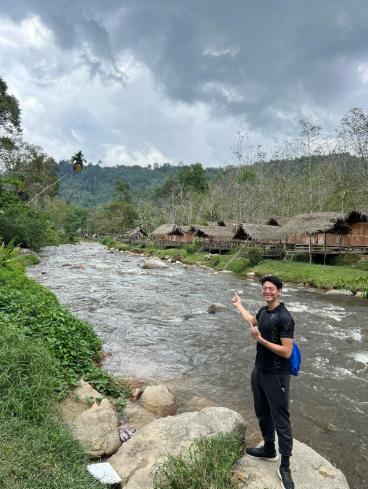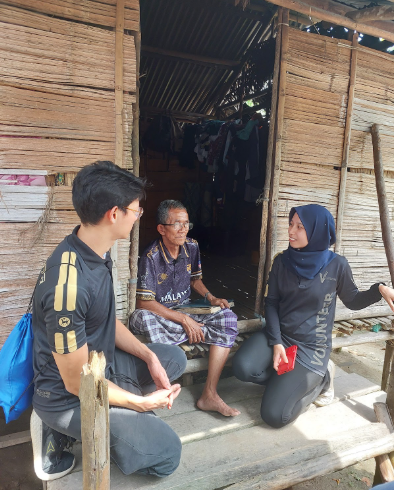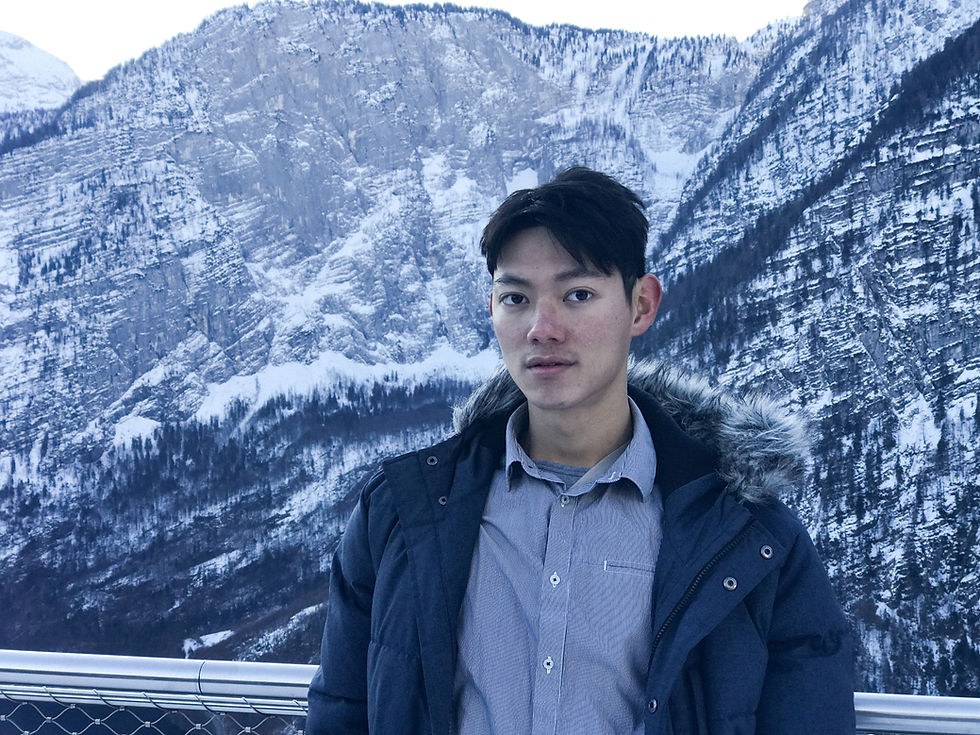Visiting the Orang Asli Temiar Community in Kg. Pos Kuala Mu
- charismamovement
- Apr 11
- 5 min read
Hopping on an opportunity offered by Bank Negara Malaysia (BNM) Volunteers, Charisma Movement journalist, Yu Qi, and I travelled to Kampung Pos Kuala Mu in Sungai Siput, Perak, on the 16th of February to support the execution of a giveaway mission. Located in the highlands of the Titiwangsa Range, the 4.5-hour car ride to the Orang Asli village from KL demanded an early start. Thus, we took off around 5.30 a.m. in the dark, alongside 12 other volunteers from BNM and sponsored goods which were to be distributed to the communities there.

Winding and bumpy, the tar road that led us to Kampung Pos Kuala Mu was a sketchy one. Stores or buildings with any sort of commercial function were nowhere in sight in the last hour of the journey, forming my first impression that the community might be a rather self-sufficient one. Our destination village is inhabited by the Muslim community of Orang Asli Temiar (which translates into: the Temiar tribe of the indigenous peoples of Malaysia), near the end of the inhabited areas along Sungai Mu. While a handful of the community has left the village to pursue conventional careers, most remain and sustain the traditionally minimalist lifestyle, or subsume roles that serve the community at large. To our surprise, tourism services in the village are on the rise, as seen in the crowd of newly-built bamboo chalets available for rent by the river.
The team’s first stop was SK Pos Kuala Mu, one of the eight primary schools in the entire region which caters to the local Orang Asli communities. Hosting 160 students and 14 teachers, the school faced many challenges, especially in terms of ensuring adequate resource allocation to make the best welfare for their students. Despite being part of the 8th cohort of the Ministry of Education’s Program Transformasi Sekolah 2025, the school received limited funding and struggled with a high teacher-to-student ratio in classrooms.

We kicked off our engagement with the students through a series of interactive games, from which we learned about the school’s struggles beyond the availability of funds. The community’s mother tongue, Temiar, is a spoken language in which linguistic mechanisms cannot be (or has not been successfully) formulated in written formats- thus the lack of a syllabus that can be taught in school. While generations of children comfortably pick up Temiar from home, both Malay and English are largely deprioritised, posing learning challenges when formal education is introduced, given subjects offered were mostly taught in Malay. This hinders students’ academic progression, which could be the key to breaking through the given circumstances in their lives.


Representing Charisma Movement’s Young Wordsmiths Competition (YWC) Team, Yu Qi pitched our English essay-writing competition to the principal, Tuan Ahmad Johari, in hopes of his support for the school’s participation. YWC has been making huge waves of impact since 2023 by providing opportunities to students from rural primary schools to practise self-expression through writing. Starting with only three participating schools in Kota Marudu, Sabah, we now work with seven schools in the region and four schools in Sarawak, receiving hundreds of submissions from students. While it might take a few more strategic discussions to secure their participation, Yu Qi successfully established contacts and piqued interests in the competition.

BNM Volunteers proceeded to distribute pre-packed school supplies to each of the students. Each care package included a school bag and stationery sets kindly sponsored by generous souls from BNM, which would hopefully ease their families' financial burden in facilitating the start of the students' new school term. The students merrily received the items, with glints of appreciation in their eyes. A care package might not mean or cost much to an average city dweller, but it could be something the locals deliberate long and hard before purchasing. We never know- a new, functional set of school supplies could very well be the reason preventing one more student from giving up on formal education, because sometimes, it is the necessities that keep the sparks of interest and motivation to study alive amongst the students.


It was noon, and the team was treated to a feast of local delicacies including rice and chicken cooked in bamboo stalks, wild greens and tapioca. I took the chance to speak to Mr. RaEe, who frequents Kampung Pos Kuala Mu and leads charitable missions for the community there. Years ago, when there was only a red dirt road connecting the village with the outside world, Mr. RaEe adventurously drove his car past hours of nothing but wild forests, till he finally met someone in the village. He was curious where the road led to and if there was civilisation where it looked impossible. When the Federal Government built tar roads in 2019, access to the village was immensely improved. Today, hikers conquering Mount. Yong Yap and tourists could challenge an undulating but safe drive into the village and rent chalets by the river, bringing change to the local economic landscape.

After lunch, we moved to the landmark Muslim prayer hall in the centre of the village to distribute food baskets containing basic groceries to the locals. A notice was broadcast from the hall, and villagers gathered around us almost instantly to receive the food baskets. We observed that mostly women and children showed up, suggesting that most young men from the community could be working outside of the village.

We chatted with a well-spoken lady cradling a baby and learned that her husband works far away in Cameron Highlands as a policeman. She was poised and spoke perfect Malay. She shared with us that in the past, secondary school students from their village had to study at boarding schools in Kuala Kangsar or Ipoh, which are both around 90km away. Life was made easier for the younger generation as a new secondary school was established some 39 km away, and is much more motivating for their pursuit of education.

We got the chance to visit several bamboo-built homes to observe and learn about the Orang Asli Termiar's lifestyle. While they also have modernised brick houses, many families have retained the traditional high-stilt bamboo huts. The huts contained limited spaces partitioned by thin wooden planks or cloths for privacy. The inside looked mostly dark, and it was hard to imagine carrying out my own daily activities indoors. How could they manage cooking, working and bathing all within the four walls, I wondered.

At the village chief, Tuk Batin's home, we learned about the strong Islamic identity and community-based living practised in the village. The 80-year-old man proudly spoke about the quality of value sharing upheld by the villagers and how the Orang Asli Temiar community has stewarded their land for donkey's years, including the four living generations in his own family.

We were alerted to kick off our way back earlier than expected as the weather was not on our side. A drizzle could turn into a downpour anytime and pose the risk of fallen trees blocking the road leading us out of the village. I was happy to learn and observe the Orang Asli Temiar's lifestyle first-hand, but many questions about their community remain unanswered. This calls for more in-depth desktop research and perhaps a longer trip to experience life in their village thoroughly. Anyone keen to join me?
By,
Euan Thum.
About Author

Euan is an avid writer who is passionate about telling stories and inspiring social change through words.



Comments